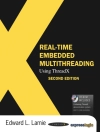This thesis covers a broad range of interdisciplinary topics concerning electromagnetic-acoustic (EM-Acoustic) sensing and imaging, mainly addressing three aspects: fundamental physics, critical biomedical applications, and sensing/imaging system design. From the fundamental physics perspective, it introduces several highly interesting EM-Acoustic sensing and imaging methods, which can potentially provide higher sensitivity, multi-contrast capability, and better imaging performance with less distortion. From the biomedical applications perspective, the thesis introduces useful techniques specifically designed to address selected challenging biomedical applications, delivering rich contrast, higher sensitivity and finer spatial resolution. Both phantom and ex vivo experiments are presented, and in vivo validations are progressing towards real clinical application scenarios. From the sensing and imaging system design perspective, the book proposes several promising sensing/imaging prototypes. Further, it offers concrete suggestions that could bring these systems closer to becoming “real” products and commercialization, such as replacing costly lasers with portable laser diodes, or integrating transmitting and data recording on a single board.
Tabella dei contenuti
Multi-wave EM-Acoustic Introduction.- Multi-wave EM-Acoustic Methods.- Multi-wave EM-Acoustic Applications.- Multi-wave EM-Acoustic Systems.- Conclusion and Future Work.
Circa l’autore
Fei Gao received his B.S. degree in electrical engineering from Xi’an Jiaotong University, Xi’an, China in 2009. He received his Ph D degree in electrical and electronic engineering at Nanyang Technological University in 2015. He was a postdoctoral visiting scholar at Stanford University in 2015. He is now working as a research fellow and electromagnetic-ultrasound group leader in NTU. He will join Shanghai Tech University as an Assistant Professor in early 2017. His research interests include fundamental study and system development of thermoacoustic and photoacoustic imaging modalities, circuit and system for biomedical applications. He has authored and co-authored about 50 journal and conference papers, one book chapter, and filed two patents.












